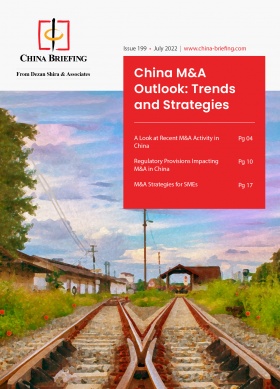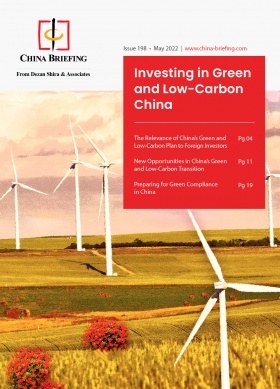Interest Rate Hikes in the US and Eurozone, RMB Depreciation, and the Implications
2022 has brought economic challenges to many countries. In September, monetary policy changes in the US and eurozone made global headlines. In response, China’s currency, renminbi (RMB), also broke the 7:1 exchange rate for the first time since 2020. In this article, we discuss the performance of major economies – US, the Eurozone, and China, assess their macroeconomic policies, and implications for investors.
US: The Fed hiked rates by 75 points
On September 21, the US Federal Reserve raised rates by another 75 points. This is the fifth time that the Fed increased rates this year and the third time with a 75-point hike in a roll. In efforts to bring down inflation, the Fed took its federal funds rate up to a range of 3-3.25 percent, while officials signaled the intention of continuing to rise to the end point of 4.6 percent in 2023. The 10-year U.S. bond yield reached 3.719 percent on September 23 after rapid growth since March.
All these efforts target the peaking inflation in the US, which is facing obvious economic overheating. The US economy contracted 0.6 percent in Q2 2022. The inflation rate stood at 6.3 percent in July and is expected to drift down to 5.4 percent by the year’s end, with the core inflation (excluding food and energy) to decline to 4.5 percent. After two consecutive quarters of negative growth, the US economy has technically entered a recession. In the previous article, we discussed the implications and strategies to cope with a potential recession.
Monetary policy trajectories in different jurisdictions must be assessed on a cross-border basis. Theoretically, higher US interest rates will create downward pressure on global markets as investors plow into higher returns. The strengthening US dollar is decimating world currencies, as countries are forced to either increase rates or devalue the currencies. The global stock markets might continue to rise or remain steady as it would take some time for the downward pressure to transmit.
Europe: ECB ends its long-term subzero rates with 75 basis-point hike
Recent data also showed a substantial slowdown in economic growth in the eurozone. The Russia-Ukraine conflict and energy crisis have put pressure on the supply chain, leading to rampant inflation. The European Central Bank (ECB) now projects future inflation to reach an average 8.1 percent in 2022, 5.5 percent in 2023, and 2.3 percent in 2024. Facing this economic pressure, for the first time in more than 11 years, the ECB raised rates by 75 basis points on September 8 to control the soaring inflation, with the possibility for further increase by year-end on a “meeting-by-meeting” approach.
Strong economic pressure has devalued the euro significantly this year. Back in July 13, 2022, the euro hit parity with the US dollar at a 1:1 exchange rate for the first time since 2002. Since then, the once stable currency has dropped further. One U.S. dollar bought nearly 1.03 euros as of market close on September 23.
The ECB interest rate hike is expected to attract a large amount of euros back to the European financial markets, to hedge the impact from rising US interest and to stabilize the pace of economic recovery in Europe. However, the ECB interest rate hike may also trigger a sovereign debt crisis, which requires the ECB to be prepared to respond.
How China is reacting to the rate increases
The RMB breached 7:1 exchange rate against US dollar
On September 28, China’s currency also made the headlines after the offshore yuan slid to 7.2 per US dollar for the first time since 2020. The yuan has accelerated its fall against the US dollar this year with a 10-percent drop since the beginning. The decline responds to the interest rise in the US and Europe while also reflecting China’s slowing economy.
To address the risks, Chinese regulators have taken several precautionary measures since last year, including a more flexible yuan exchange rate, more foreign exchange hedging, and an optimized foreign debt structure. The People’s Bank of China (PBOC) also lowered the amount of reserves banks need to hold against their foreign-exchange deposits, increasing the supply of foreign currencies in China by around US$19 billion, to slow the weakening of the yuan.
From a global perspective, the RMB is still a strong currency. While the exchange rate reached a record low, the yuan held up relatively well against a trade-weighted basket of currencies. Analysts note that the recent drop in value is reflective of the impact of monetary tightening in the US and eurozone, and the yuan has no basis for long-term depreciation or broad weakness. So far, the PBOC has not directly intervened in the foreign-exchange market and allows daily fixings to move along the market. It shows that the officials are not too concerned with the devaluation of this round.
Understanding the impact of the depreciation
However, in the short term, the devaluation could hurt Chinese companies, many of which — especially in heavy industry and real estate — have taken on large amounts of debt denominated in U.S. dollars. The devaluation means that the debt to them has become more expensive, which may further depress Chinese stock prices. Additionally, economists have voiced concerns that raising dollar/euro rates could cause capital outflows from China. Data from the PBOC showed that foreign institutional investors have already offloaded 90-billion-yuan (US$13.3 billion) worth of Chinese bond holdings in June, resulting in 5 straight months of the holdings being cut.
On a positive note, a weaker RMB would make Chinese products cheaper from the perspective of international buyers, thereby fueling stronger economic growth in China. China’s robust exports continued to play a fundamental role in stabilizing cross-border flows and have been an important source of growth amid a slowing domestic economy. Nonetheless, exports are not driven by yuan’s weakness or strength, but more driven by demand. As the world is facing high inflation, the global purchasing power is also falling, shrinking demand for Chinese supplies. Exports in China rose 7.1 percent in August from a year earlier but have slowed from an 18.0 percent gain in July. Facing such a decline, the Chinese government may further stimulate the local economy with fiscal measures.
China’s recent economic performance and policies
China’s economy has been stumbling with multilayered economic challenges. While the Q2 GDP growth was a record-low of 0.4 percent, data showed China’s economy was surprisingly resilient in August, with factory output and retail sales both growing more than expected. Official data showed that retail sales increased 5.4 percent in August year-on-year, much higher than July’s 2.7 percent; industrial production grew 4.2 percent y-o-y in 0.4 percent increase from July; and fixed asset investment increased by 5.8 percent y-o-y. The key indicators performed better-than-expected.
While the Fed is tackling inflation and kept raising interest rates this year, China’s authorities have put fighting recession as their top priority and have cut key interest rates to stimulate the stalling economy. The monetary policies of the two superpowers are also getting increasingly diverged. China’s currency policy may maintain its stability in response to current worldwide changes. China still needs a more relaxed financial environment to boost sufficient market liquidity and investment. Changing its monetary policy will disadvantage the current stabilization of China’s economy.
Implications for investors
Based on the analyses and statements from major central bank agencies (the Fed, ECB, and PBOC), volatility will remain elevated until the year-end. Both the Fed and ECB have also indicated they will raise interest rates further in the near future. Investors should adjust their baskets accordingly. For patient long-term investors, this may be a buying opportunity for equities given the recent price drops over the last week, but if investors are risk averse and sensitive to short-term market losses, now may be a time to take some equity risk off the table. We have also listed strategies for businesses to cope with a potential recession.
About Us
China Briefing is written and produced by Dezan Shira & Associates. The practice assists foreign investors into China and has done so since 1992 through offices in Beijing, Tianjin, Dalian, Qingdao, Shanghai, Hangzhou, Ningbo, Suzhou, Guangzhou, Dongguan, Zhongshan, Shenzhen, and Hong Kong. Please contact the firm for assistance in China at china@dezshira.com.
Dezan Shira & Associates has offices in Vietnam, Indonesia, Singapore, United States, Germany, Italy, India, and Russia, in addition to our trade research facilities along the Belt & Road Initiative. We also have partner firms assisting foreign investors in The Philippines, Malaysia, Thailand, Bangladesh.
- Previous Article Hong Kong Lifts Mandatory Hotel Quarantine for Inbound Travelers – What to Know Before You Go
- Next Article Belt And Road Weekly Investor Intelligence #101








